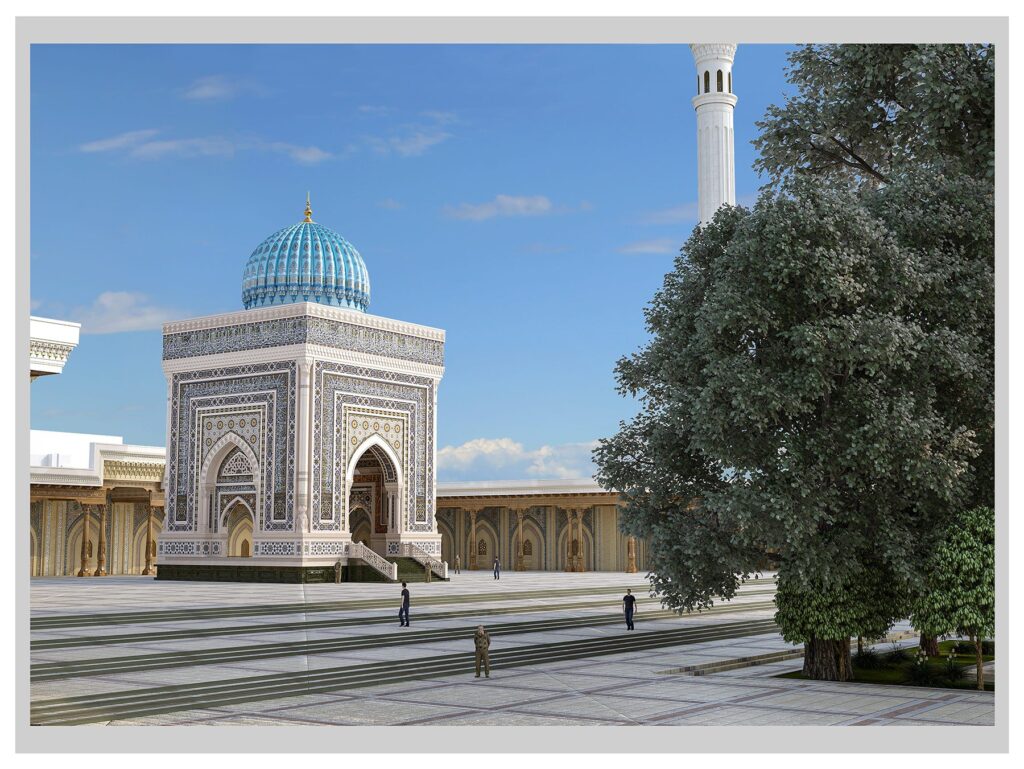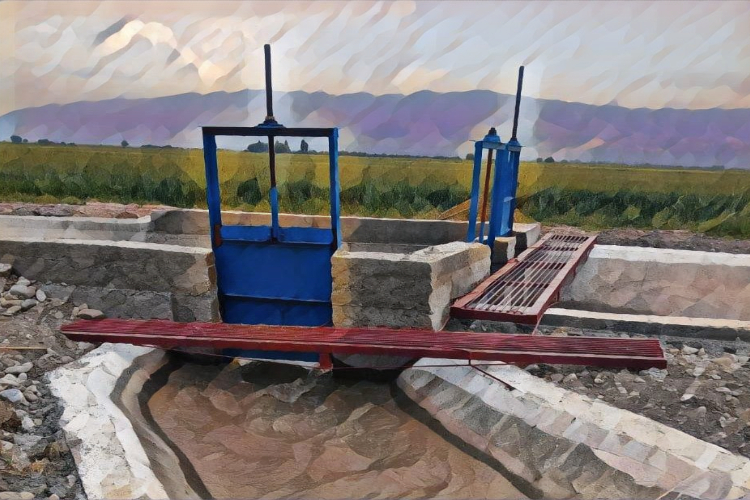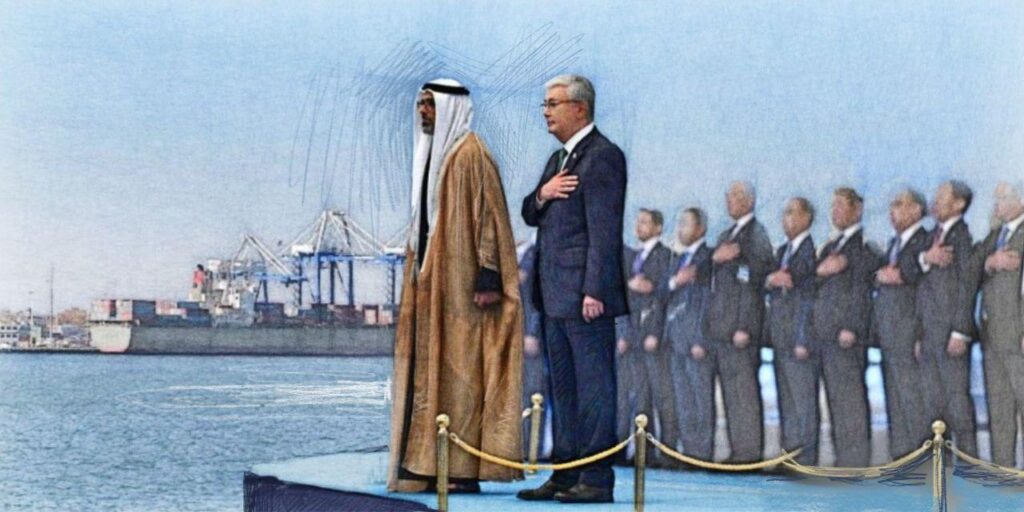Crown Prince of Abu Dhabi Khaled bin Mohamed bin Zayed Al Nahyan led a delegation of officials and businessmen from the United Arab Emirates on a visit to Kazakhstan to attend the Kazakhstan-UAE Business Forum on May 12. During the visit, Kazakhstan and the UAE signed deals worth some $5 billion and not surprisingly, three of the nine agreements were with Abu Dhabi Ports Group.
Building a new trade route to the south
Abu Dhabi Ports Group (AD Ports Group) has been leading the way in connecting Kazakhstan to the Middle East, and in turn, the UAE company is looking to take advantage of Kazakhstan’s key position along the Middle Corridor trade route.
In early August 2023, Davud Tafti, the head of AD Ports Group subsidiary Simatech Shipping & Forwarding, met with Kazakhstan’s Minister of Trade Serik Zhumangarin to discuss the shortest direct route for shipping “Kazakh export cargo the markets of the Persian Gulf, the Middle East, Pakistan, India and the coast of East Africa.”
The route goes from Kazakhstan’s Caspian port of Kuryk to the Iranian Caspian port at Amirabad. From there goods are shipped to the Iranian Persian Gulf port at Bandar Abbas and loaded onto ships heading to UAE ports at Khalifa and Fujairah.
The total time from Kuryk to Bandar Abbas is three days.
By the time Tafti and Zhumangarin met, AD Ports Group had already purchased four ships with a capacity of 7.500 tons each for transportation of bulk, container, and general cargo along Caspian Sea routes. Tafti said there were plans to buy ten more similar vessels with Amirabad being used as their home port.
Simatech Shipping & Forwarding also bought two barges, each capable of transporting 350 trucks, with plans to purchase 1,000 trucks for shipping goods between Amirabad and Bandar Abbas.
AD Ports Group signed a strategic partnership agreement with state oil and gas company KazMunaiGas (KMG) in January 2023 aimed at developing Kazakhstan’s tanker fleet in the Caspian and Black seas. The parties formed a joint venture called Caspian Integrated Maritime Solutions (CIMS).
CIMS announced in December 2023 that working with KMG subsidiary KazMorTransFlot, Kazakhstan’s national shipping company, it had acquired two oil tankers for use in the Caspian Sea.
AD Ports Group reached an agreement in January 2024 to construct a facility on Kazakhstan’s Caspian coast for building and repairing ships. Work started in early 2025 on two container vessels, each with the capacity to carry more than 500 twenty-foot equivalent units (TEU) and built especially for use on the Caspian Sea.
AD Ports Group also formed a joint venture with state railway company Kazakhstan Temir Zholy in December 2023 with the aim of improving logistics operations for transferring goods using rail and maritime routes.
At the moment, the CIMS route is by far the fastest way for Kazakhstan to trade with the Middle East.
In May 2025, Kazakhstan Temir Zholy sent the first shipment of wheat via Turkmenistan and Iran to Bandar Abbas, and from there by sea to UAE port at Jebel Ali. The estimated average shipping time is 18 days.
Expansion continues
Under new agreements signed at the Kazakhstan-UAE Business Forum, CIMS will purchase four container ships, each capable of transporting 780 TEUs, for Caspian transport, and up to four of the large Aframax oil tankers for Kazakhstan’s Black Sea fleet.
One of the agreements signed at the forum was for the construction and development of the Sarzha multi-purpose terminal at the Kuryk port. Representatives from AD Ports Group and Kazakhstan’s Semurg Invest discussed plans for the new terminal, which will be able to handle “general cargo, containers, and dry bulk cargoes.”
Kazakh Invest, the Chamber of International Commerce of Kazakhstan, and the Special Economic Zone Morport Aktau also signed Memorandums of Understanding with AD Ports Group on promoting and developing trade between Kazakhstan and the UAE.
Another of the agreements at the business forum was for cooperation between the Free Economic Zones at Kuryk, and the Khalifa Economic zones in Abu Dhabi.
A Successful Two Years
Since 2023, AD Ports Group said it has invested $175 million into its projects in Kazakhstan, and helped Kazakhstan to export more than one million tons of crude oil across the Caspian Sea, and more than six million tons across the Black Sea. The UAE company said it plans to invest an additional $600 million in projects in Kazakhstan.
Managing Director and Group CEO of AD Ports Group Mohamed Juma Al Shamisi said his company sees Kazakhstan as “a major Central Asian trade hub” and a key part of AD Ports Group’s “long-term strategy to develop the ‘Middle Corridor”’ land passage from China to Europe.”
AD Ports Group’s relationship with Kazakhstan has proven extremely beneficial to both parties in a short space of time.
As part of the UAE’s efforts to expand its trade network, strengthening infrastructure ties linking to Kazakhstan opens up huge possibilities for the Gulf State to be part of the Middle Corridor trade route. Al Shamisi called the Middle Corridor “the shortest… way to transport goods from China to Europe,” and added that his company’s “investments reflect Kazakhstan’s growing role as an emerging export leader.”
With AD Ports Group’s help, Kazakhstan finally has a reliable and expanding trade route south, plus investment and experience from a leading company in port infrastructure and connectivity.







